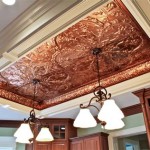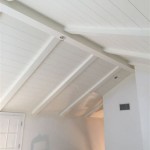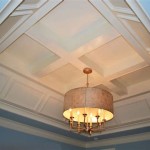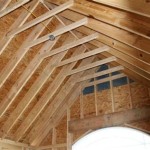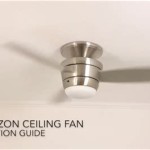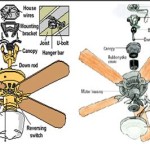How To Install Can Lights In A Suspended Ceiling
Suspended ceilings, also known as drop ceilings or T-bar ceilings, offer a versatile and relatively easy way to conceal wiring, ductwork, and plumbing in residential and commercial spaces. They also provide an opportunity to enhance the lighting design of a room through the installation of recessed can lights. While installing can lights in a suspended ceiling is a manageable project for a competent DIYer, it requires careful planning, precise execution, and adherence to electrical safety codes. This article provides a detailed guide on how to safely and effectively install can lights in a suspended ceiling.
Before commencing any electrical work, it is crucial to prioritize safety. Always turn off the power to the circuit you will be working on at the main electrical panel. Use a voltage tester to confirm that the circuit is de-energized before touching any wires. It is also recommended to wear appropriate safety gear, including safety glasses and insulated gloves. If there is any doubt about one's ability to perform the electrical work safely, it is best to consult a qualified electrician.
Planning and Preparation: Laying the Groundwork for Success
The initial stage of installing can lights in a suspended ceiling is meticulous planning. This involves determining the number of lights required, their placement, and the type of can lights suitable for the specific application. The number of lights will depend on the size of the room and the desired level of illumination. A general guideline is to space lights evenly, typically 4 to 6 feet apart, but this can be adjusted based on individual needs and preferences.
Consider the purpose of the room when determining the appropriate light level. For example, a kitchen or workspace will likely require more light than a bedroom or living room. Online lighting calculators can assist in estimating the number of lumens necessary for adequate illumination based on room dimensions and usage.
Accurate placement of the lights is equally important. Take into account existing features in the room, such as furniture, artwork, and architectural details. Avoid placing lights directly above areas where they may cause glare or cast unwanted shadows. Use a measuring tape and pencil to mark the intended locations of each light on the suspended ceiling grid.
The type of can light selected should be appropriate for the ceiling and the intended use. There are two primary types of recessed can lights: IC-rated and non-IC-rated. IC-rated (Insulation Contact) fixtures are designed to be safely installed in direct contact with insulation, while non-IC-rated fixtures require a minimum clearance around them to prevent overheating. In most cases, IC-rated fixtures are the preferred choice for suspended ceiling installations, as they provide greater flexibility in placement and minimize the risk of fire. Choose the trim that fits into the can light and suits the taste of the homeowner. There are baffle trims, reflector trims, and adjustable trims.
In addition to IC rating, consider the size and style of the can lights. Smaller, low-profile fixtures are often ideal for suspended ceilings, as they minimize the impact on the ceiling height. Choose a style that complements the overall aesthetic of the room. It is also important to select bulbs with the appropriate wattage and color temperature to achieve the desired lighting effect. LED bulbs are energy-efficient and long-lasting, making them a popular choice for recessed lighting.
Finally, double-check local building codes and regulations before commencing any electrical work. Some jurisdictions may require permits for electrical installations, and code requirements can vary depending on the type of building and the scope of the project.
Gathering the Necessary Tools and Materials
Once the planning stage is complete, gather all the necessary tools and materials. Having everything on hand before starting the installation process will save time and prevent frustration.
The essential tools for installing can lights in a suspended ceiling include:
*Voltage tester: To confirm that the circuit is de-energized.
*Safety glasses: To protect eyes from debris.
*Insulated gloves: To protect hands from electrical shock.
*Measuring tape: To accurately measure and mark locations.
*Pencil: To mark locations on the ceiling grid.
*Hole saw: To cut the holes in the ceiling tiles.
*Drill: To power the hole saw.
*Wire stripper: To strip the insulation from electrical wires.
*Wire connectors: To safely connect wires.
*Screwdriver: To tighten screws.
*Ladder or step stool: To reach the ceiling.
*Utility knife: For cutting wires and performing other tasks.
*Level: To ensure that lights are installed straight.
The necessary materials include:
*Recessed can lights (IC-rated recommended).
*Electrical wire (appropriate gauge for the circuit).
*Wire connectors (wire nuts or push-in connectors).
*Suspended ceiling support wire (optional, for additional support).
*Electrical tape (for insulating connections).
*Junction boxes (if required by local code).
Ensure that all materials are of high quality and meet applicable safety standards. Using substandard materials can compromise the safety and performance of the lighting system.
Installation Process: A Step-by-Step Guide
With the planning complete and the tools and materials gathered, the actual installation process can begin. Follow these steps carefully to ensure a safe and successful installation.
Step 1: Turn off the Power
. Before touching any wires, turn off the power to the circuit at the main electrical panel. Use a voltage tester to confirm that the circuit is de-energized.Step 2: Cut the Holes
. Using the hole saw and drill, cut holes in the ceiling tiles at the marked locations. Be careful to cut straight and avoid damaging the surrounding tiles. Make sure that the hole size matches the diameter of the can lights being installed. It is recommended to practice cutting a hole on a spare tile first to get a feel for the process.Step 3: Run the Wiring
. Run electrical wire from the existing power source to each of the can light locations. If tapping into an existing circuit, ensure that the circuit is not overloaded. Consult with an electrician if unsure about the circuit's capacity. Secure the wires to the suspended ceiling grid using cable ties or staples, ensuring that the wires are not hanging loosely. If required by local code, install junction boxes at each can light location to provide a safe and accessible connection point.Step 4: Connect the Wiring
. Carefully connect the electrical wiring to the can lights, following the manufacturer's instructions. Typically, this involves connecting the black (hot) wire to the black wire on the fixture, the white (neutral) wire to the white wire on the fixture, and the green (ground) wire to the ground screw or wire on the fixture. Use wire connectors to make secure and insulated connections. Ensure that all connections are tight and properly insulated with electrical tape.Step 5: Install the Can Lights
. Insert the can lights into the holes in the ceiling tiles. Secure them in place using the clips or brackets provided with the fixtures. If necessary, use suspended ceiling support wire to provide additional support to the can lights, especially for heavier fixtures.Step 6: Install the Trims and Bulbs
. Install the trims into the can lights. Screw the light bulbs into the can lights. Ensure that the trims are securely attached and that the bulbs are properly seated in the sockets.Step 7: Restore the Power
. Once all the connections are made and the can lights are securely installed, restore the power to the circuit at the main electrical panel.Step 8: Test the Lights
. Test each of the can lights to ensure that they are working properly. If any lights do not turn on, double-check the wiring connections and the bulb installation.Step 9: Clean Up
. Clean up the work area. Remove any debris, tools, and materials. Dispose of any waste properly.By following these steps carefully, you can safely and effectively install can lights in a suspended ceiling, enhancing the lighting design of a room and improving its overall aesthetic appeal.

How To Install Recessed Lights In A Drop Ceiling Temecula Handyman

Light Installation In A Ceiling Tile

Diy Recessed Lighting Installation In A Drop Ceiling Tiles Part 3 Super Nova Adventures

Operation Laundry Room Lighting Reality Daydream

Recessed Lighting In Basement Drop Ceiling Made Easy Suspended Ceilings And Recesse Dropped

How To Install Recessed Lighting With Ceilume Ceiling Tiles

Drywall Suspended Grid Showroom Ceiling Systems How To Install Pictures Of Tips For Installing Drop Ceilings Strictly Racine Wisconsin

Lighting Integration In Wood Ceilings 9wood

How To Put Recessed Lights In The Ceiling

Code Q A Ec M
Related Posts

